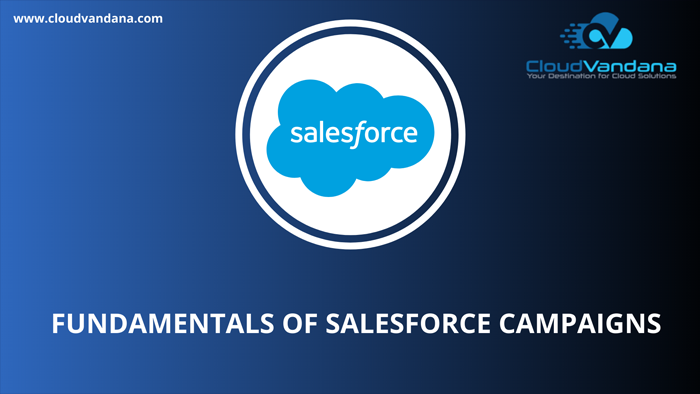Salesforce Campaigns are a group of leads and contacts exposed to specific marketing communications. In addition, it stores essential performance data so that salespeople can easily see the customers and prospects to provide marketing activity.
In this blog, CloudVandana will discuss the fundamentals of Salesforce Campaigns. Companies worldwide are using Salesforce to increase sales and increase ROI. So companies are adopting Salesforce to stay ahead of their competitors, but most users are not confident enough to understand the features offered by this platform. Let’s look at the overview of Salesforce campaigns.
Salesforce Campaigns
Salesforce Campaign is a feature offered by Salesforce that allows organizations to plan, manage, and track outbound marketing efforts. This feature links Salesforce Contacts, Leads, and opportunities to the marketing campaigns that help to generate more leads or opportunities to move them further down the funnel.
Outbound Marketing can create a lot of challenges for marketers. So Salesforce Campaigns can help get the actual return on the marketing investment. If it is set up correctly, this platform provides valuable information that marketers can take back and consider while optimizing the current campaigns and planning.
Campaigns functionality makes the process easy and fast. A new record is created under the Campaigns tab for every marketing effort. Then, various attributes are selected for each new record, like campaign type, start and end dates, budgeted and actual costs, etc. After this process, the ‘Campaign Members’ are selected. These Members can be existing Salesforce leads, or bulk lists can be imported with the help of the Salesforce API data loader. All members can be assigned a status indicating their position in the company’s sale cycle.
Once a lead responds to the marketing campaign, the organization’s Salesforce user indicates a ‘response’ on the newly-created member record. Campaigns also help marketers track if the marketing efforts impact current opportunities and measure ROI more effectively.
ROI Tracking
With the campaign’s features, the marketing and sales team can easily indicate the expected budget spend, the response rate, and the campaign’s impact. Salesforce Campaign’s ‘influence’ is essential for companies running various outbound efforts to the same members.
Hierarchy functionality tracks the ROI practically, allowing marketing teams to segment various marketing efforts together in ‘Parent Campaigns.’ Although campaigns offer a lot for marketing teams to track the effectiveness of their marketing efforts, the feature tracks and manages efforts deployed outside of Salesforce. So, campaigns are essential for ROI tracking, but they do not automate the marketing process.
Salesforce offers various tools to automate every business process. For example, multiple tools like MailChimp, and Pardot are available to automate the outbound marketing process.
Sounds great? Can you also avail of the benefits of the Salesforce platform to achieve the desired position of your business? Please feel free to take a consultation call with the Salesforce Consulting Partner CloudVandana for a customized Salesforce Solution.










